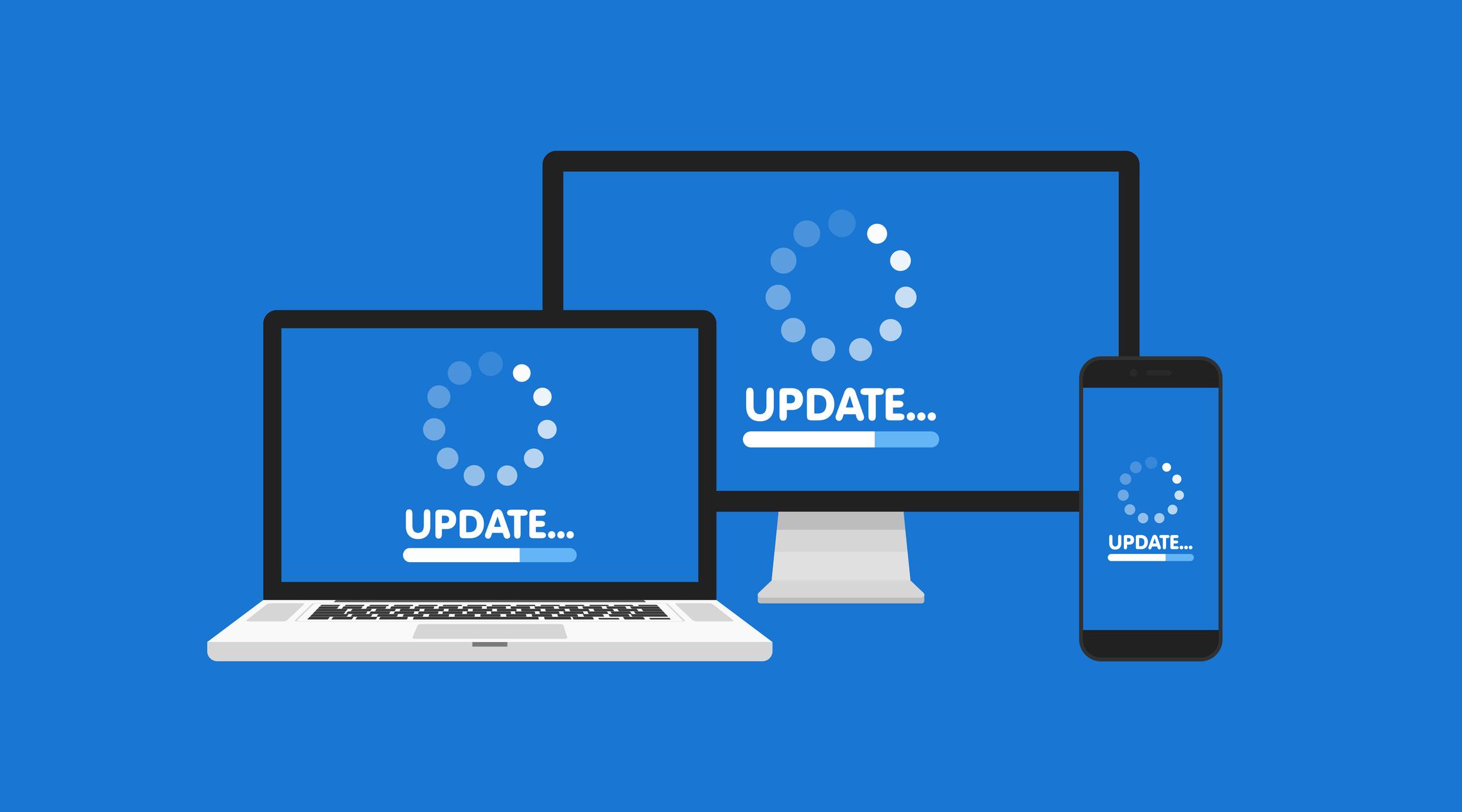
Updating your website can feel like a daunting task, but it doesn’t have to be! Whether you’re a business owner looking to refresh your online presence or a hobbyist eager to share your passion, keeping your website up-to-date is essential for engaging your audience and staying relevant in today’s fast-paced digital landscape. In this article, we’ll walk you through a simple yet effective 7-step guide to updating your website. We’ll not only highlight what to focus on but also help you avoid some common pitfalls that can lead to costly mistakes. Ready to breathe new life into your site? Let’s dive in and ensure your online space shines like never before!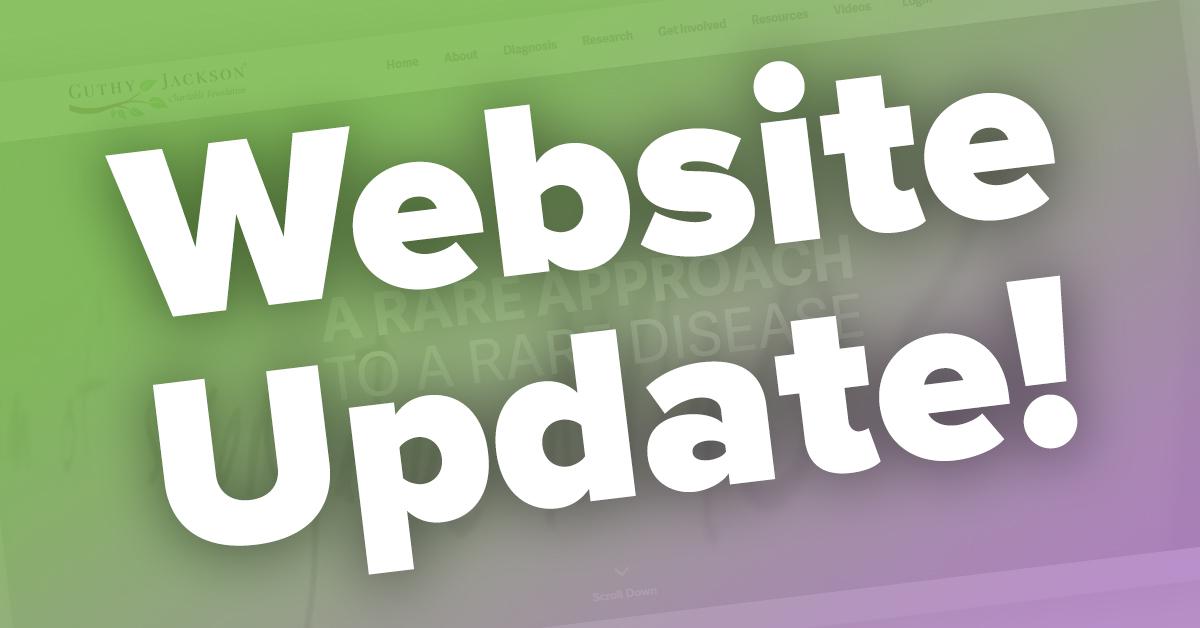
Understanding the Importance of Regular Website Updates
Maintaining a vibrant online presence requires more than just a well-designed website; it demands consistent updates to keep it relevant and engaging. Regular updates can significantly impact your site’s performance, user experience, and overall credibility.
First, consider how frequently fresh content contributes to search engine optimization (SEO). Search engines favor websites that are regularly updated with new information. This means that by frequently updating your site, you are not only providing value to your visitors but also improving your chances of ranking higher in search results. Here are some key elements that benefit from regular updates:
- Blog posts: New articles can attract visitors and establish your authority in your industry.
- Product listings: Keep your offerings current to reflect seasonal changes or new arrivals.
- Visual content: Update images and videos to maintain visual appeal and relevance.
Another crucial aspect is user engagement. A stagnant website can give visitors the impression that your business is inactive or out-of-touch. By providing new content, you encourage return visits and keep your audience engaged. Updated websites often show a lower bounce rate and a higher average time on page, indicating that visitors find value in what you present.
Additionally, regular updates enhance your website’s security. As technology evolves, so do threats. Keeping your website updated with the latest security patches and software versions helps protect against vulnerabilities that could compromise user data and damage your reputation. This proactive approach not only safeguards your site but also builds trust with your audience.
To effectively manage your website updates, consider creating a content calendar. This tool can help you organize and schedule your updates systematically, ensuring that no area is overlooked. Visualizing your update schedule can also make the process feel less overwhelming and more achievable.
Implementing a feedback loop can further enhance the effectiveness of your updates. Gathering insights from your users through surveys or comments can provide valuable information on what content resonates with them. This feedback can inform future updates and tailor your content strategy to better meet your audience’s needs.
| Update Type | Frequency | Purpose |
|---|---|---|
| Blog Posts | Weekly | Engage audience, boost SEO |
| Product Listings | Monthly | Showcase new offerings |
| Security Patches | As needed | Protect user data |
| Design Updates | Quarterly | Maintain visual appeal |
neglecting regular updates can lead to missed opportunities, decreased visibility, and potential security risks. By prioritizing updates, you not only enhance your site’s functionality but also fortify your relationship with users and search engines alike. Investing time and resources into maintaining a fresh and secure website is essential for long-term success.
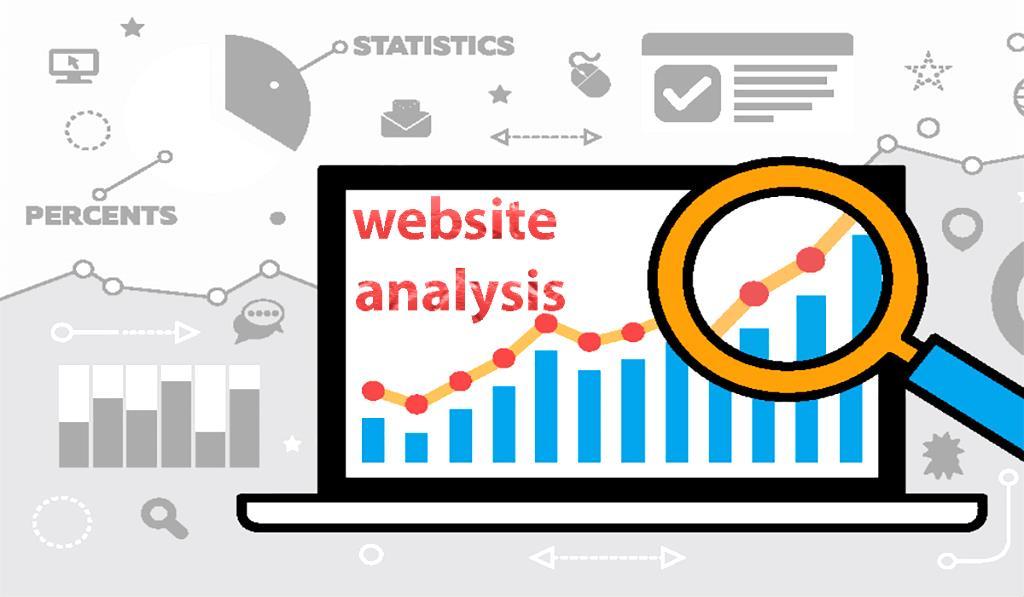
Identifying Your Websites Current State
Before diving into updates, it’s crucial to assess where your website currently stands. This will not only inform your decision-making but also help you set realistic goals for the updates ahead. Let’s break down the key areas to evaluate:
- Performance Metrics: Analyze your site’s speed, load times, and overall performance. Tools like Google PageSpeed Insights or GTmetrix can provide valuable insights.
- User Experience (UX): Browse your site as a visitor would. Are navigation and usability intuitive? Consider conducting a user survey to gather feedback.
- Content Quality: Review your existing content. Is it engaging, relevant, and updated? Outdated information can turn visitors away.
- SEO Performance: Assess your current SEO strategies. Are you ranking for relevant keywords? Utilize tools like SEMrush or Ahrefs for an in-depth analysis.
- Mobile Responsiveness: Check how your site appears on mobile devices. With increasing traffic from smartphones, mobile optimization is non-negotiable.
Once you’ve gathered this information, it’s time to compile your findings. Consider creating a table to summarize the state of your website:
| Aspect | Status | Recommendations |
|---|---|---|
| Performance | Slow | Optimize images and leverage browser caching |
| User Experience | Confusing | Simplify navigation and enhance CTA visibility |
| Content Quality | Outdated | Revise or remove old posts; add fresh content |
| SEO | Poor | Implement keyword research and backlinks strategy |
| Mobile Responsiveness | Not optimized | Use responsive design techniques |
With this assessment, you can clearly identify the strengths and weaknesses of your website. Set specific, measurable objectives based on your findings to guide your update process. Prioritize areas that will have the most immediate impact on user engagement and overall performance.
Remember, taking the time to thoroughly evaluate your current state is an investment in your website’s future. It will save you from making costly mistakes and ensure that your updates are not only effective but also aligned with your business goals.
Setting Clear Goals for Your Website Update
Before diving into the nitty-gritty of your website update, it’s crucial to establish clear goals. Without a defined direction, your efforts may lead to confusion and unnecessary expenses. Here are some key elements to consider:
- Identify Your Audience: Understanding who visits your site helps tailor your content and design.
- Define Your Purpose: Whether it’s increasing sales, enhancing user engagement, or providing information, be specific about what you want to achieve.
- Set Measurable Objectives: Goals should be quantifiable. For instance, aim for a 20% increase in traffic or a 15% boost in conversion rates.
- Determine Your Budget: Decide how much you can spend on the update. This will help prioritize your goals and keep your project on track.
Once you’ve established your primary goals, break them down into smaller, actionable steps. For example, if your objective is to improve user experience, you might include:
- Conducting user testing to gather feedback.
- Redesigning navigation for better accessibility.
- Implementing responsive design to cater to mobile users.
It’s also beneficial to create a timeline for reaching these goals. This not only keeps your project organized but also helps in tracking progress. Consider using a simple table to outline your goals, timelines, and responsible parties:
| Goal | Action Steps | Timeline | Responsible |
|---|---|---|---|
| Increase Traffic | SEO Optimization | 1-2 months | Marketing Team |
| Enhance User Engagement | Update Content Strategy | 3 months | Content Team |
| Boost Conversions | Revamp CTA Buttons | 2 months | Design Team |
Remember, the key to a successful website update lies not just in the aesthetics but in aligning every change with your defined goals. Regularly revisit these objectives during the update process to ensure you stay on track. Engage your team and stakeholders to foster collaboration and gather insights that can refine your approach.

Researching Trends and User Preferences
Understanding the latest trends and user preferences is crucial for any website update. By aligning your website with what users are currently seeking, you can create a more engaging experience that keeps visitors coming back. Here are some strategies to effectively conduct your research:
- Utilize Analytics Tools: Platforms like Google Analytics can provide invaluable insights into your audience’s behavior. Pay attention to metrics such as bounce rates, session duration, and pages visited to identify areas that need improvement.
- Surveys and Feedback: Engage your current users through surveys. Ask specific questions regarding their preferences, what they enjoy, and what they find frustrating about your existing site. This direct feedback can guide crucial changes.
- Competitor Analysis: Don’t overlook your competitors. Investigate their websites to see what features they’re implementing and how they engage their audience. This can inspire innovative ideas while also revealing gaps in your own offerings.
Staying updated with industry trends is another key aspect. Regularly follow relevant blogs, attend webinars, and participate in forums or social media groups. Here are a few areas to watch:
- Design Trends: User interface (UI) and user experience (UX) design trends evolve rapidly. Emphasize minimalistic designs, mobile responsiveness, and intuitive navigation to meet user expectations.
- Content Preferences: Video content is on the rise. If your analytics show that users engage more with videos than text, consider incorporating more multimedia elements to keep your audience engaged.
- Accessibility Features: As awareness about inclusivity grows, ensuring your website is accessible to all users—including those with disabilities—can set you apart from competitors.
To make informed decisions, analyze the data you gather. Use tools like heat maps to visualize where users are clicking most on your site. This can help you refine your layout and call-to-action placements. For a more organized approach, consider creating a table to compare user preferences before and after updates:
| User Preference | Before Update | After Update |
|---|---|---|
| Mobile Responsiveness | 35% | 85% |
| Video Content | 20% | 60% |
| Accessibility Features | 15% | 50% |
By regularly evaluating trends and user preferences, you can ensure that your website remains relevant and appealing. Always be ready to pivot your strategy based on the feedback and data you collect, allowing for a more dynamic and user-centric approach to your website updates. The more you understand your audience, the better you can serve them, ultimately resulting in increased satisfaction and loyalty.

Creating a Comprehensive Update Plan
Updating a website is not just about refreshing the design or adding new content; it requires a well-thought-out plan to ensure that everything runs smoothly. will help you stay organized and significantly reduce the risk of costly mistakes. Here’s how you can approach it:
Start by defining your goals for the update. Are you aiming to improve user experience, boost SEO performance, or refresh the overall aesthetic? Clearly outlining your objectives will guide your decisions throughout the update process. Consider asking yourself:
- What specific issues am I trying to address?
- How will this update benefit my users?
- What metrics will I use to measure success?
Next, assess your current website. Conduct a thorough audit to identify strengths and weaknesses. Create a checklist that includes:
- Content quality and relevance
- Page load speed
- Mobile responsiveness
- SEO optimization
- Technical issues (broken links, errors, etc.)
Once you have a clear understanding of your current site, it’s time to prioritize updates. Not everything needs to be done at once. Use a priority matrix to categorize your updates based on urgency and impact:
| Priority Level | Description |
|---|---|
| High | Critical issues that need immediate attention, like security flaws or broken links. |
| Medium | Updates that will enhance user experience but are not urgent. |
| Low | Cosmetic changes or minor content updates that can wait. |
With priorities set, create a timeline for your updates. Break down tasks into manageable phases, ensuring you allocate sufficient time for testing and feedback. A visual project management tool can be helpful in tracking progress and keeping everyone on the same page.
Don’t forget about communication! Involve your team and stakeholders early in the process. Regular updates and feedback sessions can help ensure that everyone is aligned and that potential issues are addressed promptly. Set up regular check-ins and review meetings to discuss progress and any roadblocks.
prepare for the launch. Create a pre-launch checklist that includes final testing of functionalities, reviewing content for accuracy, and checking all links and redirects. After launching the update, monitor your site’s performance closely. Analyze key metrics to see if the update meets your initial goals, and be ready to make adjustments based on user feedback.

Selecting the Right Tools and Technologies
Choosing the right tools and technologies can make all the difference when updating your website. With a myriad of options available, it’s essential to align your choices with your specific goals and the needs of your audience. Here’s what to consider:
Understand Your Requirements
Before diving into the selection process, take a moment to assess your website’s needs. Think about:
- Website Purpose: Is it a blog, an e-commerce site, or a portfolio?
- Target Audience: Who are you trying to reach?
- Desired Features: What functionalities do you want to add or improve?
Content Management Systems (CMS)
A solid CMS can simplify your update process. Here are some popular choices:
- WordPress: Great for flexibility and a vast array of plugins.
- Shopify: Best suited for e-commerce.
- Wix: User-friendly with an intuitive drag-and-drop interface.
Evaluate these options based on your technical capabilities and the complexity of the updates required.
Essential Plugins and Integrations
Plugins can enhance your website’s functionality significantly. Consider integrating:
- SEO Plugins: Such as Yoast SEO to improve your search visibility.
- Analytics Tools: Google Analytics to track visitor behavior.
- Security Plugins: Like Wordfence to protect your site from threats.
Responsive Design Tools
With a growing number of users accessing websites on mobile devices, ensure your updates consider responsive design. Tools like:
- Bootstrap: A popular framework for developing responsive sites.
- Adobe XD: For prototyping and testing responsive layouts.
These tools can help you create a seamless experience across devices.
Performance Optimization Technologies
Fast loading times are crucial. Utilize tools like:
- CDNs (Content Delivery Networks): Such as Cloudflare to speed up content delivery.
- Image Optimization Tools: Like TinyPNG to reduce image sizes without losing quality.
Your Budget Matters
Lastly, keep your budget in mind. Some tools offer free versions with limited features, while others come with premium pricing. Here’s a quick comparison:
| Tool | Free Version | Premium Starting Price |
|---|---|---|
| WordPress | Yes | $0 (Hosting costs apply) |
| Shopify | No | $29/month |
| Wix | Yes | $14/month |
Remember to weigh the costs of tools against the value they bring to your website updates.
Implementing Design and Functionality Enhancements
Enhancing Design and Functionality
Updating your website isn’t just about aesthetics; it’s also about functionality. A well-designed website with intuitive features can significantly improve user experience, leading to higher engagement and conversion rates. Here are some effective strategies to enhance both design and functionality.
First, consider the user interface (UI) elements. A clean, modern UI can make a world of difference. Focus on:
- Consistency: Ensure fonts, colors, and button styles are uniform across the site.
- Whitespace: Utilize whitespace to create visual separation and avoid clutter.
- Responsive Design: Make sure your website is mobile-friendly, adjusting seamlessly to all screen sizes.
Next, don’t overlook the importance of user experience (UX). UX encompasses how users interact with your website. Here are a few tips:
- Navigation: Simplify your navigation structure so users can easily find what they need.
- Loading Speed: Optimize images and reduce code to ensure quick loading times.
- Accessibility: Implement features that make your site usable for individuals with disabilities, such as alt texts and keyboard navigation.
Moreover, integrating functionality upgrades can elevate your website’s performance. Consider adding:
- Contact Forms: Enable easy communication by using simple, user-friendly contact forms.
- Live Chat: Offer real-time support to enhance customer service and engagement.
- Social Media Integration: Link to your social profiles and enable sharing to boost visibility.
It’s also wise to track user interactions and behaviors. Utilizing analytics tools helps in understanding how visitors navigate your site. For example, you can analyze bounce rates and conversion paths to make informed decisions. Consider creating a simple table to summarize key metrics:
| Metric | Current Value | Target Value |
|---|---|---|
| Bounce Rate | 40% | 30% |
| Average Session Duration | 1:30 | 2:00 |
| Conversion Rate | 2% | 5% |
Lastly, don’t underestimate the power of feedback. Solicit opinions from current users and consider A/B testing different design elements or functionalities. This iterative process will help you hone in on what resonates with your audience. Remember, your website is a dynamic entity, and constant evaluation is key to its success.
By focusing on design and functionality enhancements, you can transform your website into a powerful tool that not only attracts visitors but also keeps them coming back for more.
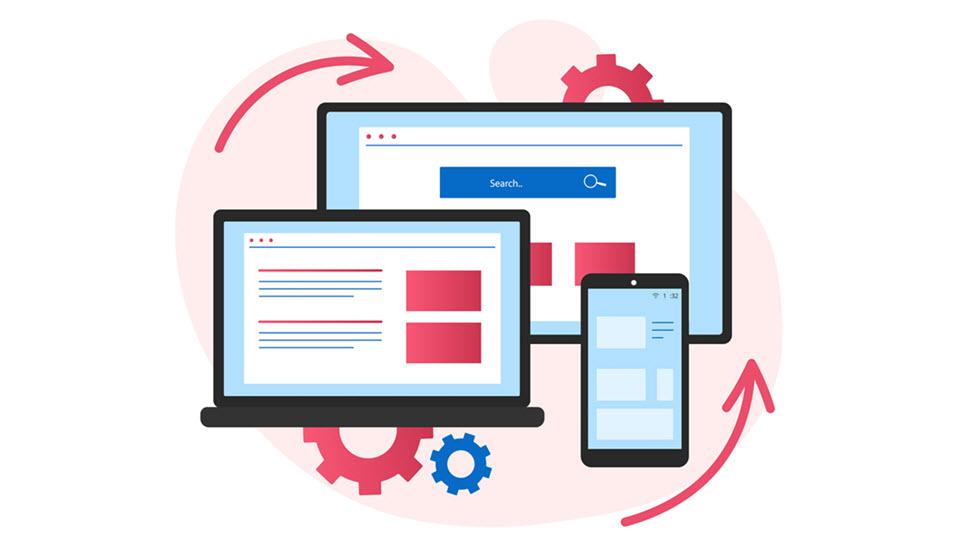
Optimizing for Mobile and Search Engines
In today’s digital landscape, having a website that caters to both mobile users and search engines is not just a luxury—it’s a necessity. Did you know that over half of web traffic comes from mobile devices? If your website isn’t optimized for mobile, you’re missing out on a significant audience.
To ensure your site is mobile-friendly, consider the following best practices:
- Responsive Design: Implement a responsive design that adapts to various screen sizes. This means your content, images, and navigation should look great on smartphones, tablets, and desktops alike.
- Fast Loading Speeds: Optimize images and minify CSS and JavaScript files to improve loading times. A slow website can frustrate users and lead to high bounce rates.
- Touch-Friendly Navigation: Make buttons and links large enough for users to tap easily. Ensure that your menus are accessible and user-friendly on smaller screens.
Search engine optimization (SEO) goes hand in hand with mobile optimization. Here are some key elements to focus on:
- Keyword Research: Use tools like Google Keyword Planner to identify relevant keywords that your target audience is searching for. Incorporate these keywords naturally into your content.
- Meta Tags and Descriptions: Craft compelling meta titles and descriptions that encourage users to click through from search results. Keep these concise, relevant, and include your primary keywords.
- Quality Content: Provide valuable, informative content that answers users’ questions. Google rewards websites that prioritize high-quality content with better rankings.
To visualize the balance between mobile optimization and SEO, consider the following table:
| Aspect | Mobile Optimization | SEO |
|---|---|---|
| Design | Responsive templates | SEO-friendly structure |
| Speed | Fast loading on mobile | Optimized for search engines |
| Content | Readable on small screens | Keyword-rich and engaging |
| Navigation | User-friendly menus | Logical link structure |
always test your website on various devices and browsers. Tools like Google’s Mobile-Friendly Test can provide insight into how well your site performs on mobile. Regularly monitoring your site’s performance will ensure it remains optimized for both users and search engines, keeping you ahead of the competition.

Testing Your Updates Before Launch
Before you hit that big Publish button on your website updates, it’s crucial to ensure everything is in perfect working order. Testing your updates isn’t just a precaution; it’s a vital step in the website management process. Here’s how you can effectively test your updates to avoid any embarrassing mishaps post-launch.
Start by creating a staging environment. This is a duplicate of your live site where you can implement and test changes without impacting the user experience. Most web hosts offer this feature, making it easy to set up. When you’re working in a safe zone, you can experiment freely. Here are some things to focus on:
- Functionality: Ensure all links, forms, and buttons are working as intended.
- Compatibility: Test your site across different browsers (Chrome, Firefox, Safari) and devices (mobile, tablet, desktop).
- Speed: Check the loading times. A slow website can drive visitors away.
- Content: Review text and media for typos, formatting issues, and broken images.
Next, enlist the help of colleagues or friends to perform what’s known as user acceptance testing (UAT). This can provide invaluable feedback from fresh eyes. They may spot issues that you overlooked or suggest improvements that could enhance user experience. When conducting UAT, ask testers to:
- Navigate through the site as if they were regular users.
- Report any bugs or confusing aspects they encounter.
- Provide feedback on the overall look and feel of the updates.
Don’t forget to check your site’s analytics after your updates. Look for any sudden drops in traffic or engagement. If you notice anything unusual, it may indicate an issue that needs addressing before going fully live. Here’s a simple table to help you track essential metrics:
| Metric | Before Update | After Update |
|---|---|---|
| Page Views | 10,000 | 10,500 |
| Bounce Rate | 45% | 40% |
| Avg. Session Duration | 2 min | 2.5 min |
consider implementing some form of rollback plan. In case you encounter issues after launching your updates, having a backup allows you to revert quickly to the previous version of your site. Regular backups are essential, so take the time to ensure you have a reliable system in place.
Gathering Feedback from Users
One of the most crucial steps in updating your website is . This invaluable input can drive improvements and ensure that your changes resonate with your audience. Engaging with your users not only helps you identify issues but also fosters a sense of community and loyalty. Here’s how to effectively gather and utilize feedback:
- Surveys and Questionnaires: Create targeted surveys to understand user preferences, pain points, and experiences. Tools like SurveyMonkey or Google Forms can make this process seamless.
- User Testing Sessions: Organize sessions where users can navigate your website while you observe. This will give you real-time insights into their interactions.
- Feedback Forms: Incorporate feedback forms directly on your site. Make them easily accessible, and consider incentivizing users to share their thoughts.
- Social Media Engagement: Leverage your social media platforms to solicit feedback. Create polls or discussion threads to encourage user interaction.
- Email Outreach: Reach out to your existing user base through email campaigns, inviting them to share their thoughts on recent updates or overall satisfaction.
When collecting feedback, remember to ask open-ended questions. This approach invites more detailed responses and helps uncover insights that closed questions might miss. For instance, instead of asking, “Did you like the new design?” consider asking, “What specific aspects of the new design do you find most appealing or challenging?”
Once you’ve gathered the feedback, it’s essential to analyze and categorize it. Create a simple table to track the comments and suggestions. Here’s a basic format to get you started:
| User Feedback | Category | Action Required |
|---|---|---|
| “The navigation is confusing.” | Usability | Consider redesigning the menu structure. |
| “I love the new color scheme!” | Design | Maintain current design elements. |
| “Pages take too long to load.” | Performance | Optimize images and scripts. |
Once you’ve categorized the feedback, prioritize it based on impact and feasibility. Focus on changes that will significantly enhance the user experience while being realistic about your resources. Remember, not all feedback will be actionable, but identifying recurring themes can highlight critical areas for improvement.
After implementing the changes based on user feedback, don’t forget to circle back to your users. Let them know their voices were heard and the impact of their suggestions. This can be done via newsletters or social media updates, reinforcing a culture of collaboration and user-centered design.
gathering and utilizing feedback doesn’t just inform your website updates—it builds a community around your brand. By actively involving users in the process, you can create a more engaging and effective online experience that truly meets their needs.

Monitoring Performance Post-Update
Once your website update is complete, it’s essential to closely monitor its performance to ensure everything is functioning as intended. This phase is crucial for identifying any issues early on, allowing for quick resolutions that can minimize downtime and maintain user satisfaction.
Start by tracking important metrics that reflect your website’s health and user engagement. Here are some key performance indicators (KPIs) you should consider:
- Page Load Time: A slower website can frustrate users and lead to higher bounce rates.
- Traffic Sources: Understand where your visitors are coming from to assess the effectiveness of your update.
- User Behavior: Analyze how users interact with your site, including navigation paths and click rates.
- Conversion Rates: Monitor how well your update is converting visitors into customers or leads.
Utilizing tools like Google Analytics and other performance monitoring software can provide valuable insights into these metrics. Set up real-time monitoring so you can receive alerts for any significant fluctuations in performance. This proactive approach will allow you to address issues before they escalate into more significant problems.
In addition to quantitative metrics, gather qualitative feedback directly from your users. Encourage them to report any issues they encounter and consider implementing a feedback widget on your site. This can provide you with insights that numbers alone may not reveal, such as usability concerns or aesthetic preferences.
| Monitoring Tool | Key Features | Best For |
|---|---|---|
| Google Analytics | Traffic analysis, user behavior tracking | Overall site performance |
| GTmetrix | Page speed insights, waterfall report | Performance optimization |
| Hotjar | Heatmaps, session recordings | User experience analysis |
Regularly reviewing your website’s performance post-update is imperative. Schedule follow-up checks to ensure that any changes made have not introduced new issues. Consider conducting A/B testing on critical elements, like call-to-action buttons or landing pages, to see what resonates best with your audience.
don’t hesitate to revisit your update strategy based on the data you collect. If certain features are underperforming, it may be time to tweak or replace them. Maintaining a flexible approach will help you adapt to user needs and optimize the effectiveness of your website over time.
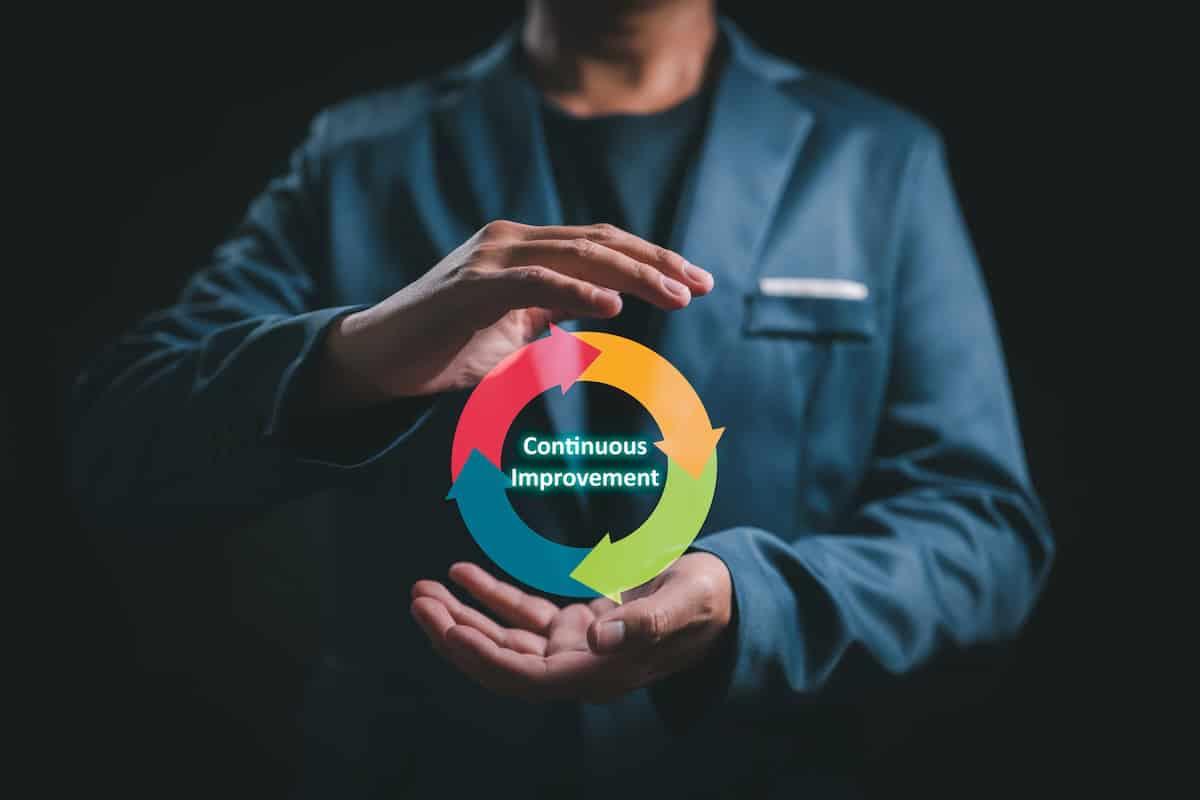
Staying Ahead with Continuous Improvements
In the fast-paced digital landscape, keeping your website updated is not just a choice; it’s a necessity. Websites are dynamic entities that require regular enhancements to not only keep pace with technological advancements but also to meet ever-evolving user expectations. Embracing continuous improvements ensures that your website remains relevant, functional, and engaging.
So, what does continuous improvement look like in the context of your website? Here are a few key areas to consider:
- User Experience (UX): Regularly assess and tweak the design and navigation to make it intuitive and user-friendly.
- Content Updates: Fresh, relevant content keeps your audience engaged and improves SEO rankings.
- Performance Optimizations: Regularly test your site speed and functionality to ensure fast loading times and minimal downtime.
- Security Enhancements: Implement the latest security patches and practices to safeguard user data and maintain trust.
Consider implementing a regular review schedule where you analyze user feedback, site analytics, and industry trends. This ongoing evaluation will help identify areas for improvement that can significantly enhance user engagement and conversion rates. A/B testing can also be a valuable tool here, allowing you to experiment with different designs or content to see what resonates most with your audience.
Moreover, it’s vital to stay ahead of competitors by adopting new technologies and trends. For instance, integrating AI-powered chatbots can improve customer service, while responsive design ensures a seamless experience across devices. Here’s a quick look at how different enhancements can impact your website:
| Enhancement | Impact |
|---|---|
| User Feedback Integration | Increases customer satisfaction and loyalty |
| SEO Improvements | Boosts search engine visibility and traffic |
| Mobile Optimization | Enhances user experience on mobile devices |
| Regular Content Updates | Positions your brand as a thought leader |
Ultimately, the key is to foster a culture of innovation. Encourage your team to suggest new ideas and solutions that can enhance the website. This collaborative approach not only empowers your team but also leads to a more robust and forward-thinking digital presence.
By committing to continuous improvement, you’ll not only enhance your website’s performance but also cultivate a loyal user base. Remember, the goal is not just to avoid mistakes but to proactively create an exceptional online experience that keeps your audience coming back for more.

Common Pitfalls to Avoid During Your Update
Updating your website can feel like a daunting task, especially if you don’t know what pitfalls to watch out for. Many website owners jump into updates without a proper plan, leading to costly mistakes that can affect user experience and SEO rankings. To ensure a smooth update process, consider these common missteps.
- Neglecting Backups: Before you make any changes, always create a backup of your current website. This ensures that if something goes wrong during the update, you can restore your site to its previous state without losing any data.
- Ignoring Mobile Optimization: With more users browsing on mobile devices, it’s crucial to ensure that your website is responsive. Failing to optimize for mobile can lead to a high bounce rate and lost traffic.
- Overlooking SEO Best Practices: During an update, it’s easy to get caught up in aesthetics and functionality, but neglecting SEO elements like meta tags, alt text, and keyword optimization can hurt your site’s visibility.
- Not Testing Changes: Simply updating your site doesn’t mean it will function correctly afterward. Always test your changes on multiple devices and browsers to catch any issues before going live.
- Focusing on Looks Over Function: While a visually appealing website is important, don’t sacrifice functionality for aesthetics. Ensure that navigation remains intuitive and that all features are user-friendly.
Another common mistake is rushing through the update process. It might be tempting to make changes quickly, especially if you’re excited about a new design or feature. However, taking your time allows for thorough testing and quality assurance, which can save you headaches later on.
Communication is also key during updates. If you have a team or collaborate with freelancers, make sure everyone is on the same page regarding the changes being made. Miscommunication can lead to conflicting updates and ultimately a disjointed user experience.
Lastly, don’t forget about your audience. Ensure that any changes you make align with your users’ needs and expectations. Gather feedback from your audience before and after the update to understand what works and what doesn’t.
| Common Pitfall | Consequences | Prevention |
|---|---|---|
| Neglecting Backups | Loss of data and site functionality | Regularly create backups before updates |
| Ignoring Mobile Optimization | High bounce rates, loss of traffic | Test on multiple devices |
| Overlooking SEO | Decreased online visibility | Review SEO elements during updates |
| Rushing Updates | Unresolved issues, poor performance | Allow sufficient time for testing |
By steering clear of these common pitfalls, you can ensure that your website update is a success and enhances your site’s performance rather than hindering it.

Final Thoughts on Keeping Your Website Fresh and Engaging
Maintaining a website that continually resonates with your audience is essential in today’s fast-paced digital landscape. Ensuring that your content remains fresh and engaging not only fosters user loyalty but also enhances your site’s visibility in search engine results. Here are some strategies to keep your website vibrant:
- Regular Content Updates: Fresh content is a magnet for both returning visitors and search engines. Update your blog regularly with relevant topics, insights, and industry news.
- Visual Enhancements: Incorporate high-quality images and videos. Visuals can break up text and make your content more digestible. Don’t forget to optimize them for faster loading times!
- User Feedback: Encourage and utilize feedback from your visitors. This can provide invaluable insights into what works and what doesn’t, helping you tailor content to better meet their needs.
- Engaging Calls to Action: Every post should invite interaction. Whether you’re prompting comments or suggesting further reading, clear calls to action can boost user engagement.
Additionally, consider the overall user experience. A website that’s difficult to navigate or slow to load can frustrate visitors and drive them away. Here are some aspects to enhance:
- Responsive Design: Ensure your website is mobile-friendly. A growing number of users browse on their phones, and a seamless experience across devices is crucial.
- Fast Loading Times: Optimize your site’s performance by compressing images and leveraging browser caching. Users expect quick access to information, and delays can lead to high bounce rates.
- Consistent Branding: Keep your branding consistent across all pages. This includes colors, fonts, and messaging that align with your brand identity.
Lastly, don’t underestimate the power of analytics. Regularly reviewing your website’s performance data can provide insights that help you make informed adjustments:
| Metric | Importance | Action |
|---|---|---|
| Page Views | Indicates content popularity | Focus on high-performing topics |
| Bounce Rate | Shows how engaging your content is | Revise or enhance poorly performing pages |
| Session Duration | Reflects user engagement levels | Add more related content to retain visitors |
Incorporating these strategies will not only make your website more appealing but also establish it as a go-to resource in your niche. Remember, a fresh and engaging website is a dynamic one—so stay proactive and adaptable to the ever-evolving digital environment.
Frequently Asked Questions (FAQ)
Q&A: How to Update a Website: 7-Step Guide (Avoid Costly Mistakes)
Q1: Why is it important to update my website regularly?
A1: Great question! Regular updates keep your website fresh and relevant, which is crucial for both user experience and SEO. An outdated site can drive visitors away and harm your search engine rankings. Plus, updating helps you showcase new products, services, or content that can engage your audience better!
Q2: What are some common mistakes people make when updating their websites?
A2: One of the biggest mistakes is not having a clear plan. Jumping in without a strategy can lead to inconsistent branding, broken links, or lost content. Another mistake is ignoring mobile optimization. With so many users accessing sites via their phones, a mobile-friendly design is essential!
Q3: Can you briefly outline the 7-step guide to updating a website?
A3: Absolutely! Here’s a quick rundown:
- Assess Your Current Site: Identify what’s working and what isn’t.
- Set Clear Goals: Determine what you want to achieve with your update.
- Create a Plan: Outline the steps you’ll take, including timelines.
- Design for Your Audience: Ensure the design resonates with your target users.
- Update Content: Refresh text, images, and multimedia to keep it engaging.
- Test Functionality: Check all links, forms, and features to ensure everything works smoothly.
- Launch and Monitor: Go live but keep an eye on performance and user feedback.
Q4: How can I ensure my updates align with my brand?
A4: Consistency is key! Use your brand’s voice and visual elements—like colors, fonts, and logos—throughout the site. Before finalizing changes, ask yourself if each update reflects your brand’s mission and values. If you’re ever in doubt, consulting with a branding expert can be very helpful!
Q5: What tools or resources should I consider using during the update process?
A5: There are many great tools out there! For content management, consider platforms like WordPress or Squarespace. For SEO insights, tools like Google Analytics and SEMrush are invaluable. And for design, Canva or Adobe XD can help you create stunning visuals without breaking the bank.
Q6: How do I handle potential downtime during the update?
A6: Planning is crucial! Try to schedule updates during off-peak hours when traffic is low. You can also set up a maintenance mode page to inform visitors that changes are underway. If you foresee significant downtime, consider notifying your audience in advance via email or social media.
Q7: What should I do after I launch the updated site?
A7: After launch, it’s time to monitor performance! Use tools like Google Analytics to track traffic and user behavior. Gather feedback from users to identify any issues or areas for improvement. Regular monitoring will help you make adjustments and ensure your site continues to meet your goals.
Q8: Can I update my website myself, or should I hire a professional?
A8: It really depends on your comfort level and the complexity of the updates. If you’re tech-savvy and the changes are minor, you can definitely do it yourself. However, if your updates are extensive or you want a polished look, hiring a professional can save you time and ensure a higher quality result.
Q9: What’s the one takeaway I should remember from this guide?
A9: The most important takeaway is to plan strategically! A thoughtful approach ensures that your updates enhance the user experience and align with your goals, avoiding costly mistakes down the line. Remember, a well-updated website can be your most powerful marketing tool!
Feel free to reach out if you have any more questions or need further assistance with your website updates!
In Summary
As we wrap up our journey through the essential steps of updating your website, remember that this process is more than just a checklist—it’s an opportunity to breathe new life into your online presence. By following these seven steps, you’re not just avoiding costly mistakes; you’re positioning your website to better meet the needs of your audience and stay ahead of the competition.
So, whether you’re revamping your design, improving your content, or enhancing user experience, take the time to plan meticulously and execute thoughtfully. Each update is a step towards creating a site that not only looks great but also performs even better.
Don’t hesitate to reach out if you have questions or need further guidance—updating your website can be daunting, but you don’t have to go it alone! Let’s keep the conversation going, and together, we can ensure your website remains a powerful tool in your digital arsenal. Happy updating!






